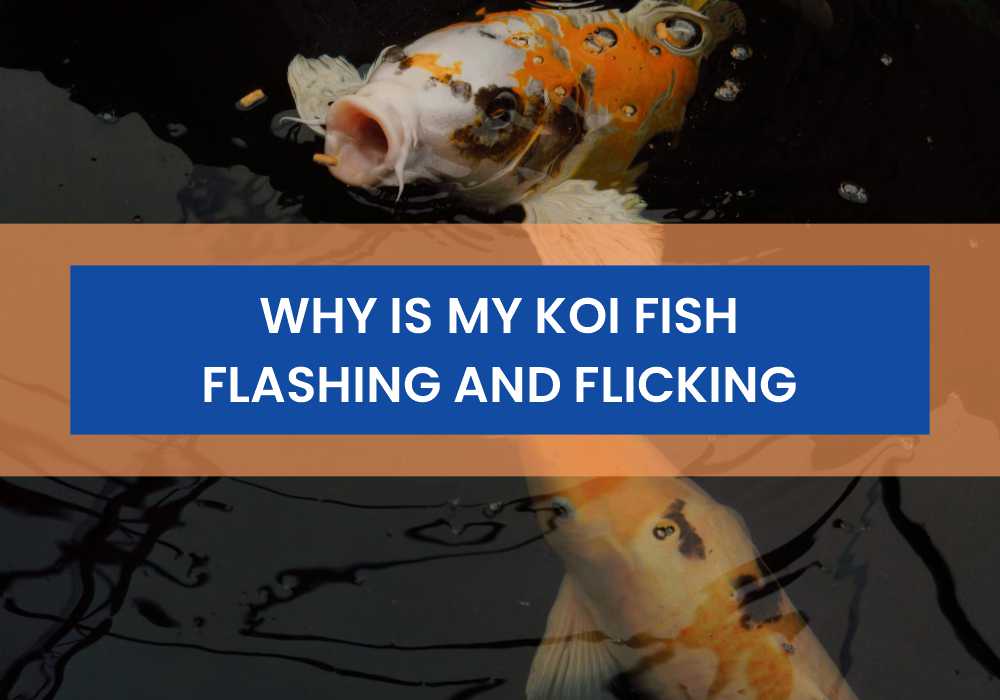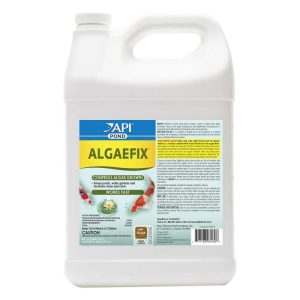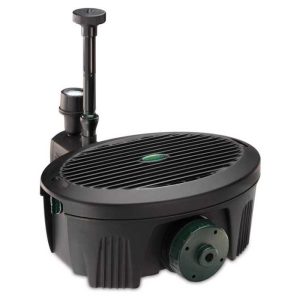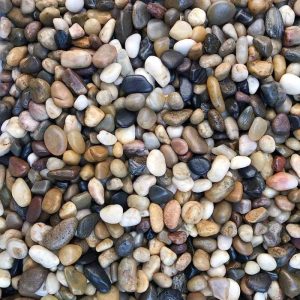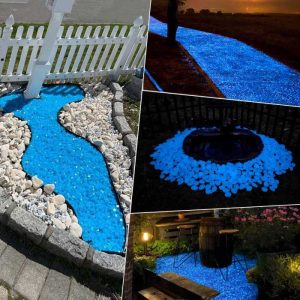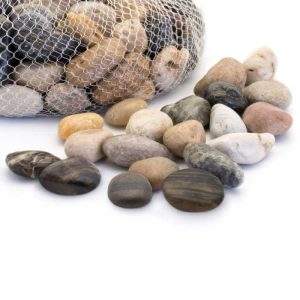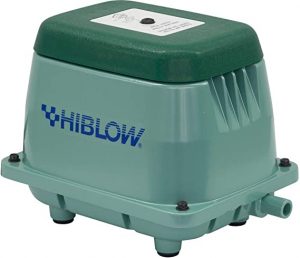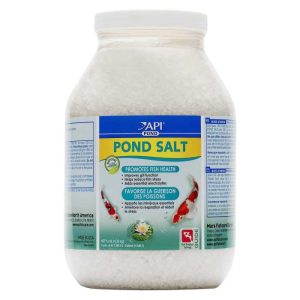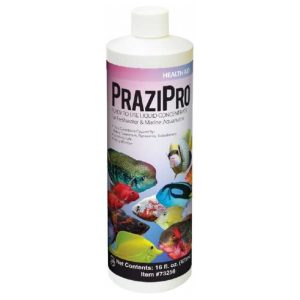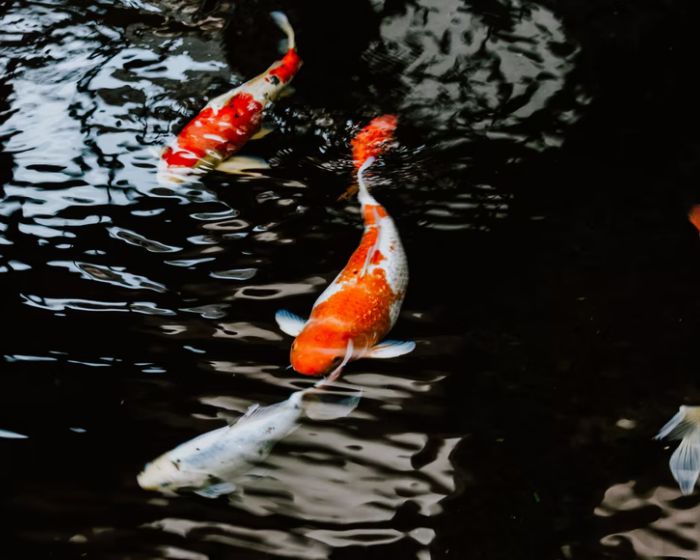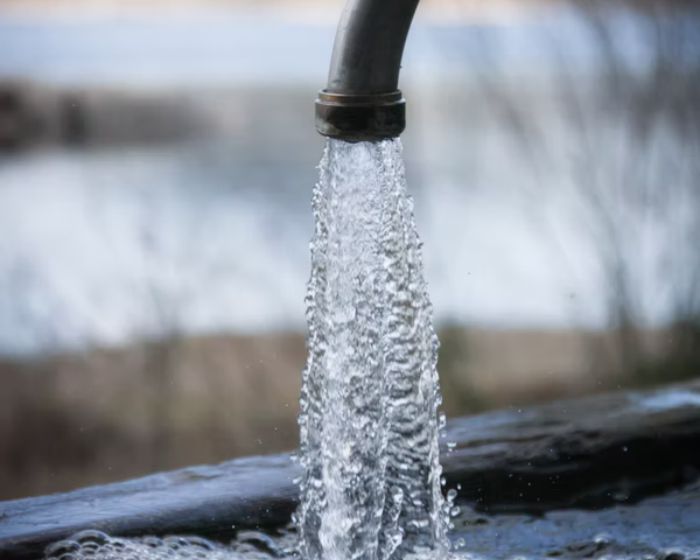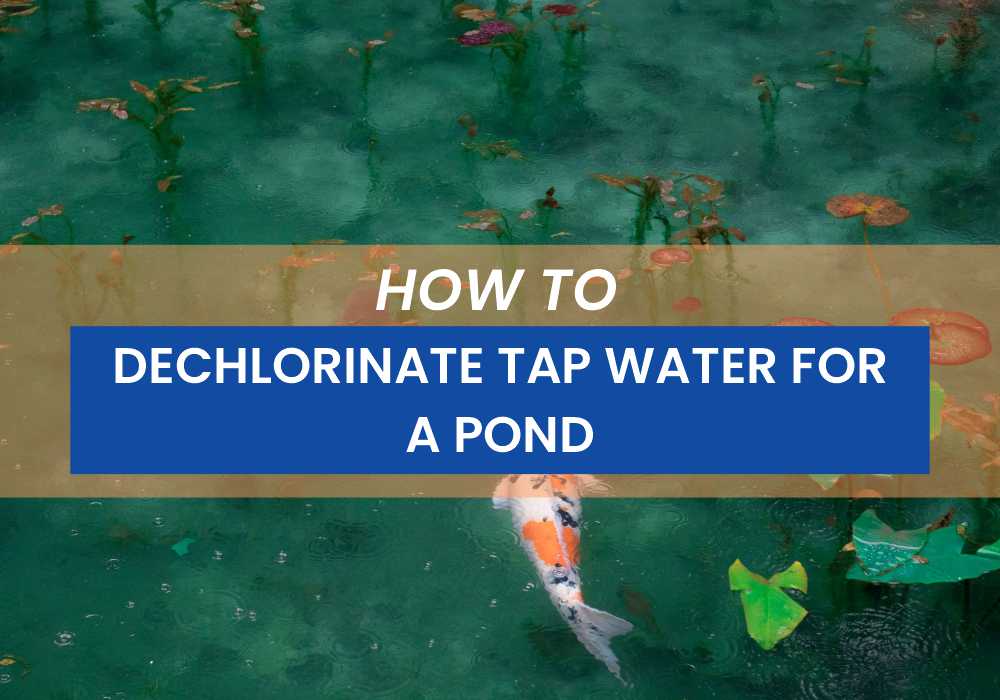As an Affiliate, We may earn a commission that doesn't cost you extra from qualifying purchases using links in this post. It helps keeps this blog running.
One of the most amazing things you can see in a koi pond is when the koi start flashing. This can be quite a spectacle, and it’s definitely something you don’t want to miss if you ever get the chance to see it. In this blog post, we’ll take a closer look at what flashing is, and why koi do it. We’ll also discuss some of the possible reasons behind this behavior. So, if you’re curious about this fascinating aspect of koi behavior, read on!
Why is my koi fish flashing?
A koi fish flashing is a common sign of irritation or parasites on the skin. Koi, like most aquatic species, do not have fingernails and must therefore use objects in their environment to help them scratch themselves.
When koi fish get irritated or itchy they will perform a display known as “flashing,” which consists of the fish rapidly and repeatedly turning its body back and forth, exposing the silvery scales on its sides. The koi will also flash parts of their body that may have parasites or irritants.
Flash behavior is most commonly associated with parasitic infections, which are fairly common among koi fish. Parasitic diseases are caused by organisms such as flukes or Ichthyophonus hoferi. If your koi are suffering from parasites, they may also exhibit other external signs of disease, including darkening of the skin around the head and fins, or a grayish, flaky appearance of the skin.
Alternatively, flashing behavior can also be a sign that your fish are just stressed out and overwhelmed by their surroundings. If you have many koi in a small space, overcrowding them can cause stress and lead to flashing behavior. In this case, it might help if you decrease the number of koi in your pond.
It is important to note that koi flash for a variety of reasons, and it’s difficult to determine what exactly is causing them to do so. If you see flashing behavior, the best thing you can do is monitor your fish closely and wait for further developments. If they stop flashing but continue to remain inactive and eat less, that could be a sign of illness or parasites.
It’s also important to note that koi possess many different colors, not just the muted orange color you might commonly associate with koi fish. When koi flash, they display their true colors for a short time; bright and vibrant shades such as red and blue.
If you notice your koi are flashing, be patient. Your fish should stop the behavior on their own if they are not sick or suffering from parasites. If the flashing continues, try to find out what might be causing it so that you can eliminate the problem and keep your fish healthy.
Why is my koi fish flicking?
Koi will also perform another behavior known as “flickering,” which consists of the fish rapidly and repeatedly opening and closing its gill covers, and just like flashing, your koi is flicking when the fish scrape against vegetation or rocks in their pond, they may also fling off scales, which is known as “flicking.” This behavior is usually observed at the edges of ponds when koi try to dislodge debris that has become stuck on their fins. . It’s also common for koi to scratch against objects in their environment, such as rocks or gravel, which can help them get rid of irritants.
A koi fish flicking is a sign of irritation when the koi tries to remove something irritating their skin. Koi scratching behavior is often associated with parasitic infections or skin irritation caused by algae or wounds from other koi in the pond. If your koi are infected with parasites, they may try to scratch or scrape themselves on objects in their environment to relieve the irritation caused by parasites crawling underneath their scales.
The best thing you can do if you see your koi fish scratching or flicking is to make sure the pond does not have excess algae or debris that your koi might be trying to get rid of. You can also try adding more vegetation or rocks for them to rub against, which may help relieve itching.
If you notice your koi are scratching and also show other signs of ill health, such as darkened skin or grayish flaking, you should bring your koi to a fish veterinarian.
How To Treat Koi Flashing (How to stop koi fish from flashing)
While Koi flashing may seem like a minor issue, if left untreated, flashing can lead to serious health problems for your koi. To treat koi fish flashing, the first step is to identify the cause of the flashing.
Common causes of Koi flashing include:
- Irritation
- Parasites
- Poor Water Quality
- Stress
- Overfeeding
- Not enough Oxygen
- Malnutrition
- Sunburn
Once the cause of the irritation is identified and determined, it can be addressed and treated accordingly.
To stop your Koi from flashing or flicking, you should
Some 15 effective Koi flashing treatments include:
1) Improving Water Quality
Make sure that your koi fishes live in a pond with good water quality that does not have excess algae or debris in it. To achieve this, you’ll have to be consistent with proper pond maintenance using Algaecides, adding a filtration system, and changing the water more frequently.
2) Adding Rocks or Plants to the Pond
You can try adding more rocks for your koi fish to rub against. That should take the itch away and stop them from flashing. It can also help provide shelter and reduce stress for the koi.
3) Adjusting Feeding Habits
Overfeeding can lead to flashing, so it is important to adjust feeding habits accordingly. Overfeeding can lead to poor water quality, which can stress the fish and contribute to flashing behavior. By providing a balanced and appropriate diet, ensuring proper portions, and avoiding excessive feeding, you can improve water conditions and reduce the likelihood of Koi flashing. This simple adjustment promotes the overall health of Koi fish and helps alleviate the flashing issue.
4) Quarantine Infected Fish
If parasites are the cause of the flashing, infected fish should be quarantined and treated. This will help to prevent the spread of any parasites or diseases.
5) Increase Oxygen Levels
6) Improve Nutrition
Improving the quality of food you are feeding your koi can also help to reduce stress and improve health. Avoid giving your Koi poor food and nutrition as they may start flashing due to malnutrition. Ensure the koi are getting the proper nutrition by feeding them high-quality food they can eat in 10 minutes.
7) Adding Aquatic Plants to the Pond
Aquatic plants help to oxygenate the water and provide a natural place for koi to hide if they are feeling stressed. The aquatic vegetation can also help to improve water quality and provide a natural source of shade for your koi which will also protect them from sunburn.
8) Reducing Stress Factors
Try to identify any stressors in the environment and remove them if possible. Common stressors include loud noises, bright lights, too many fish in the pond, etc.
9) Regular Health Check-ups
It is important to have your koi checked by a veterinarian on a regular basis to ensure they are healthy and to catch any potential problems early. These check-ups allow early detection of any underlying health issues and provide an opportunity for timely intervention. By monitoring their overall well-being, and water quality, and conducting routine physical examinations, Koi owners can ensure the fish receive appropriate treatment and maintain optimal health. Regular check-ups help prevent complications and promote the well-being of Koi fish suffering from flashing.
10) Adding Salt to the Water
The simple step of adding a controlled quantity of Non-iodized salt, Sodium Chloride (NaCl) salt to the pond water serves two purposes: killing parasites and enhancing water quality. The introduction of salt helps eliminate harmful organisms that may afflict the koi, while also promoting a healthier aquatic environment.
11) Treating with Anti-Parasitic Medications
If bacteria and parasites are the cause of the flashing, medications may be necessary to eradicate them. You can treat Koi Flashing through anti-parasitic medications like the Hikari Prazipro. These medications are specifically designed to combat parasites that cause the flashing behavior in koi fish. By administering the appropriate anti-parasitic medication, fish owners can effectively eliminate the underlying parasites, helping to restore the health and well-being of their koi. This treatment approach can be crucial in preventing further complications and ensuring the overall vitality of the fish.
When in doubt, always reach out to your veterinarian to prescribe antibiotics and antiparasitic medication to use for your fish.
12) Introducing UV Sterilization
Introducing UV Sterilization in a koi fish pond can greatly enhance water quality and eliminate parasites. UV Sterilization employs ultraviolet light to kill harmful microorganisms, algae, and parasites present in the water. This process helps maintain a healthy environment for koi by reducing the risk of disease transmission and promoting clearer and cleaner water.
13) Reduce the Quantity Of Fish in The Pond
Try to limit the number of fish in the pond so the Koi’s are not overcrowded. Overcrowding can lead to stress and increased chances of diseases, including Koi Flashing. By maintaining a suitable fish population, you can create a healthier environment for your Koi and reduce the likelihood of this condition. Prioritizing their well-being through proper pond management contributes to the overall health and longevity of your Koi fish.
14) Frequent Water Change
You should perform water changes on a weekly basis or at least once a month to keep the ammonia level normal and also maintain good water quality.
15) Increase Aeration
The fish may start flashing if there is not enough oxygen. Adding more oxygen to the water will improve the overall health of Koi and reduce stress. So, provide extra pond aeration so that your fish can have enough oxygen in the pond. Enhanced aeration promotes better water circulation, preventing the buildup of toxins and harmful substances.
If you suspect your koi is flashing, it is important to take action quickly and treat them to ensure their health and well-being are not endangered. By following these tips above, you can help to treat koi fish flashing and keep your fish healthy and happy. If you have treated the flashing and it does not improve, it is important to consult a veterinarian familiar with koi fish. serious health problems can develop if the flashing is left untreated.
Do koi flash for no reason?
No, a Koi does not flash for no reason, and neither do they flash for the fun of it. A koi fish flashing can mean a lot of things and part of it is a very clear sign of stress and discomfort in your fish, they also flash when they want to relieve themselves of stress or discomfort. There are many reasons as to why your koi is flashing, and it would be best to find out what the cause of this behavior is.
What does koi flashing look like?
When your koi fish flashes, it is best described as opening its mouth, releasing some bubbles, and shaking its body, which might also cause the fish to fall on its side. When flashing, a Koi looks like he is trying to itch himself just like you would by scratching your skin with an object if you were uncomfortable or wanting relief from an itch as seen in this video below.
Flashing is used to get rid of parasites such as lice and flukes on your koi’s body. Sometimes koi flicking is mistaken for flashing, but flicking is the act of your koi fish shaking its body rapidly or twitching to get rid of these parasites.
Do koi flash when stressed?
Yes, Koi fish may flash when they are stressed and/or uncomfortable. Flashing, or shimmying is a unique behavior that koi fish exhibit to communicate with one another. It is used as a way of saying “I’m stressed” and can occur when an individual koi feels threatened by its surroundings. When koi flash, they will press their bodies up against one another with their fins extended outward. The flash can last for a few seconds or it may continue for several minutes. If the flash is continuous, there are most likely other problems occurring within the fish’s environment that need to be addressed in order to reduce the stress level of all involved fish.
Sometimes when koi flash, the reason behind it is usually not to be aggressive but rather to communicate stress. Koi flash when in a crowded environment and may flash when in the presence of other fish or animals that they feel threatened by. When fish flashing is accompanied by aggression, there may be an issue with overcrowding and space, which must be fixed. If the flash continues, there may be aggression between koi that needs to be taken care of by adding more space or introducing distractions inside of the fish tank.
Do koi flash during spawning?
Yes, koi fish will flash and display their colors when they are spawning otherwise in courtship mode. Flashing is also a behavior that koi fish use to show off their brilliant colors when challenging or courting another koi fish. They also flash in order to draw the attention of the female. When multiple males are displaying to one female this method is used to determine which one will win and therefore breed with the female.
Some koi breeders believe that when koi fish are flashing during spawning, it means they are planning to release eggs. So if your koi is flashing just before spawning, then this could mean that eggs are about to be released.
Here is Why Your Koi is Flashing After Water Change
There are 4 major reasons why your Koi fish might start flashing after a new water change and the reasons are as follow:
1) Different pH Levels
Your koi fish might start flashing after a water change because the new water has a different pH level than the old water. The change in pH can be stressful for your koi fish, and they might start flashing as a result. If you notice your koi fish flashing after a water change, try acclimating them to the new water slowly by adding a little bit of the new water to their tank each day.
2) Strange Temperature
Another reason why your koi fish might start flashing after a water change is because they are not used to the new temperature of the water. If the new water is too cold or too warm, it can stress out your koi fish and cause them to start flashing. To avoid this, make sure that you gradually acclimate your koi fish to the new temperature of the water by adding a little bit of the new water to their tank each day.
3) New Parasite
The fish could also be trying to get rid of any parasites that might have been introduced into the new water. parasites are often introduced into tanks through new plants or fish. If your koi fish are flashing, it could be because they are trying to get rid of any parasites that might have been introduced into the new water. To avoid this, make sure that you quarantine any new plants or fish before adding them to your tank.
4) New Environment
Finally, your koi fish might start flashing after a water change because they are not used to the new scenery. If you have recently rearranged your aquarium or added new decorations, your koi fish might start flashing as a result. If you notice your koi fish flashing after a water change, try giving them time to adjust to their new surroundings.
Here is why your koi is flashing after heavy rain.
Rainfall can alter the koi pond water PH balance. If the PH balance of your koi pond becomes too acidic, it can trigger your fish to flash. Since acidity is not good for koi fish it means you should be checking on their pond more frequently after heavy rainfall to make sure that their water PH balance is intact.
Aside from that, if it’s a heavy downpour, such a large quantity of water rushing into your koi pond might quickly change the temperature and water conditions. This can be slightly stressful for koi fish and in turn lead to their flashing behavior.
Here is why your koi is flashing at night
Sometimes, you will realize once in a while that your koi fish is acting weird at night time and constantly flash and jump out of water even though they are healthy during the day, ate well, and show no sign of sickness.
Well, your koi might flash at night because of PH swings. When there is a fair amount of Algae in your pond, the evening is one of the times there is likely to be a change in the water PH because of the algae.
Koi fish will also occasionally flash at nighttime because they are afraid of something that has entered their pond. If you have noticed this behavior on more than one occasion during nighttime, then there is likely some foreign object in your pond that irritates them or they are afraid of.
Here is Why Your Koi is Flashing After Food
There are 3 main reasons why your koi fish may be flashing after food. All of them are as follows:
1) Food is too Large:
One reason could be that the food is too large and the koi is trying to break it down into smaller pieces. If this is the case, try chopping the food into smaller pieces before feeding.
2) Clogged Food:
Another reason could be that the food is clogged in the Koi gills and the fish is trying to clear it out. If this is the case, simply catch and help the fish unclog its gill and then try giving the koi a little bit of time before feeding again.
3) Spoilt Food
Another reason could be that the food is spoiled or rotten, and the koi is trying to get rid of it. If you think this may be the case, check the food for signs of spoilage before feeding it to your koi.
– Scare Away Competitors and Prey: It could simply be an instinctive behavior designed to scare away predators and competitors so its food is not taken away.
Here Is Why Koi Is Scraping On Bottom Of Pond
Sometimes you might notice and see your Koi fish scrapping at the bottom of the pond, Koi rubbing on bottom of pond, or Koi fish rubbing on rocks. There are a few reasons why this might be happening.
- One possibility is that they are trying to look for food at the bottom of the pond like algae or other food that may be growing there.
- There is something in the water that is bothering the fish. This could be anything from too much chlorine to something more serious like an infection.
- Another possibility is that they are trying to remove any parasites that may be attached to their skin.
- Finally, it could also be that they are simply trying to smooth out the bottom of the pond so that it is more comfortable for them to swim in.
If you notice your Koi fish scrapping the bottom of the pond or rubbing their sides against a rock, it is important to figure out what is causing the problem and fix it.

I’m Akin Bouchard. Even though I now own several different fish species, I first became a koi pond owner because I loved these creatures and wanted to turn my passion into something more serious. I take pride in my collection of koi fish and love sharing my knowledge with others interested in these beautiful creatures.
A Comprehensive Guide to Training Your Fish to Perform Amazing Tricks Feats

